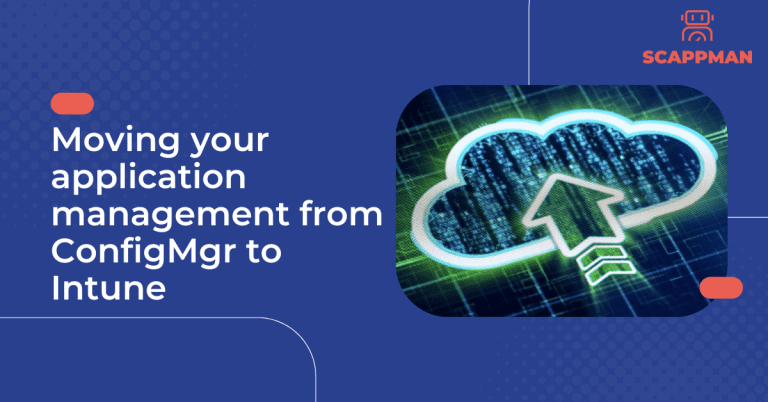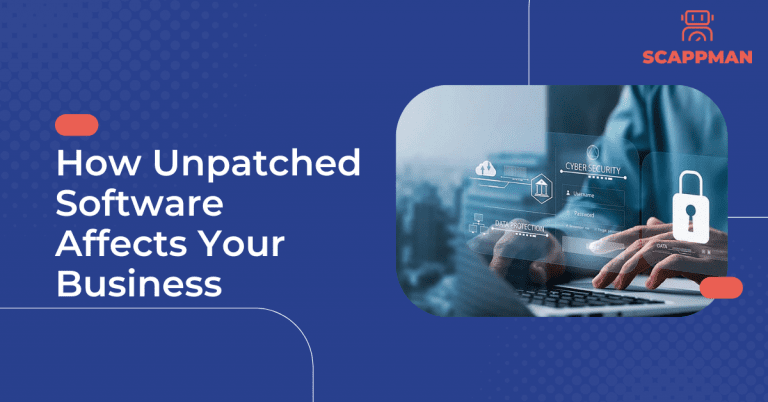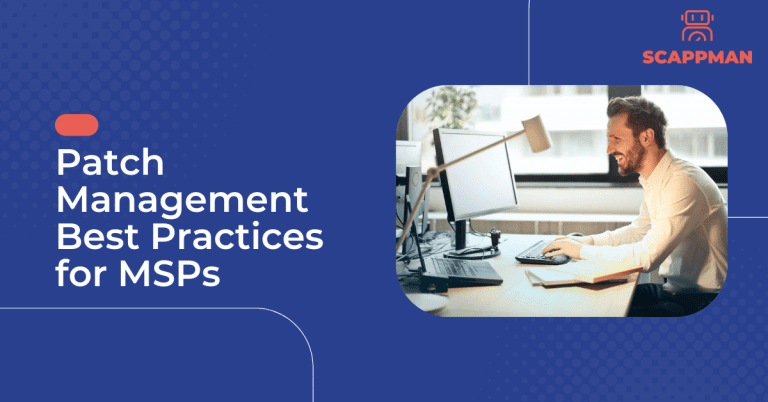As the world becomes more and more digitized, the importance of patch management grows. Patch management is the process of identifying, acquiring, installing, and verifying patches for software products. For MSPs, patch management is especially important because it helps to ensure the security and stability of client systems. By keeping systems up to date, MSPs can help their clients avoid potential security threats and vulnerabilities.
In this article, we are going to explore the reasons why patch management plays a crucial role for MSPs, as well as discuss why software updates and patch management can be a hassle for end users and IT admins.
What are patch management and patch management policy?
Patch management is the process of identifying, acquiring, installing, and verifying patches for software products. A patch is a piece of code that is used to fix a bug or improve the performance of the software. The process of patch management includes testing the patches before they are deployed, as well as creating a plan for deploying the patches.
Patch management is important because it helps to keep software programs up to date and running smoothly. By applying patches in a timely manner, you can avoid potential security vulnerabilities and performance issues.
An organization’s patch management policy is the set of guidelines and procedures that dictate how and when patches should be applied to systems within the company. The goal of a patch management policy is to keep systems up-to-date and secure from vulnerabilities.
A patch management policy should cover the following areas: detecting and scheduling, prioritization, testing, patch deployment, tracking, monitoring, and reporting.
The frequency with which patches are applied will also need to be considered. For some organizations, monthly or quarterly patch cycles may suffice. Others may need to apply patches weekly or even daily. It’s important to work with an MSP to create a tailored plan that meets your unique needs.
Read more about patch management and patch management policy:
What is Patch Management Policy
What is Patch Management: stages, best practices, challenges, automated patch management
Importance of patch management for MSPs
With the growing number of cyberattacks, patch management has never been more important than now. In 2022, the average number of weekly attacks per company increased by more than 30%. Without a proper patch management solution, hackers can easily take advantage of unpatched software.
As an MSP, you are responsible for the maintenance and security of your client’s networks. Patch management is a vital part of this responsibility. Patches are released to address security vulnerabilities and improve the stability of the software. Without patch management, MSPs leave their clients’ networks vulnerable to attack and susceptible to downtime.
Here are the reasons why MSPs need reliable patch management in place:
1. To protect your clients’ data: Patching is one of the most effective ways to prevent data breaches. By ensuring that all security vulnerabilities are patched in a timely manner, you can help keep your clients’ data safe from hackers.
2. To reduce downtime: Downtime can be costly for businesses, so it’s important to minimize it as much as possible. With a good patch management system in place, you can quickly patch any security vulnerabilities that could lead to downtime.
3. To improve efficiency: A well-managed patching process can help improve your team’s overall efficiency.
4. To ensure regulatory compliance. Many industries have strict regulations governing how sensitive data must be protected. By patching systems regularly, MSPs can help their clients stay compliant with these regulations.
Aside from ensuring the security of your clients, patches often provide you with access to new features or capabilities, which you might miss out on.
Why MSPs need a patch management tool
Patch management can be challenging, especially for large organizations with many software products. That’s where a patch management tool comes in – it that can help make patch management more efficient and effective.
Patch management as a service or through a tool is beneficial because it saves a considerable amount of time. Lacking the right tools IT admins would need to dedicate their time to seeking out vulnerabilities and ensuring that all patches are found, run, and tested as soon as they are made available. The automated nature of a patch management tool ensures that devices are adequately protected without sacrificing valuable time.
How to choose a patch management solution
Patch management can be a time-consuming and tedious task, but it’s essential for keeping systems up-to-date and secure. By automating patch management, MSPs can take a proactive approach to security and ensure that their systems are always patched with the latest security updates.
Automating patch management can also help MSPs to improve their overall security posture. By taking a proactive approach to patching, MSPs can reduce the risk of vulnerabilities being exploited by attackers.
Here are a few things to keep in mind when choosing a patch management solution:
- Ease of use: You’ll want a solution that is easy to set up and use so that you can get started quickly and without any headaches.
- Compatibility: Make sure the solution you choose is compatible with the systems you need to manage.
- Third-party patching: The majority of security vulnerabilities now come from third-party applications. Therefore, it is best to have a patch management solution that will take care of third-party application updates, protecting your company from breaches.
- Multi-tenancy support: The solution must allow the management of multiple clients from one platform.
Read more about how to choose a patch management solution:
How to choose Patch Management software
Scappman as a patch management solution for MSPs
If you’re not already using a patch management tool, now is the time to start with Scappman.
Scappman is a 100%-cloud solution that automatically installs all the necessary updates for third-party applications. For MSPs, Scappman provides a complete third-party patch management solution, that allows you to manage all your customers’ apps from one platform:
- All customers in one platform.
- Partner Portal (invoicing, inviting customers, pop-up customization…)
- Advanced application management (app sets, users & group assignments…).
Furthermore, there are more than 850 third-party applications in the Scappman App Store, that are always up to date and secure to use. You can also upload your own application to the platform and manage it like any other application.
Book your demo with Scappman today.






